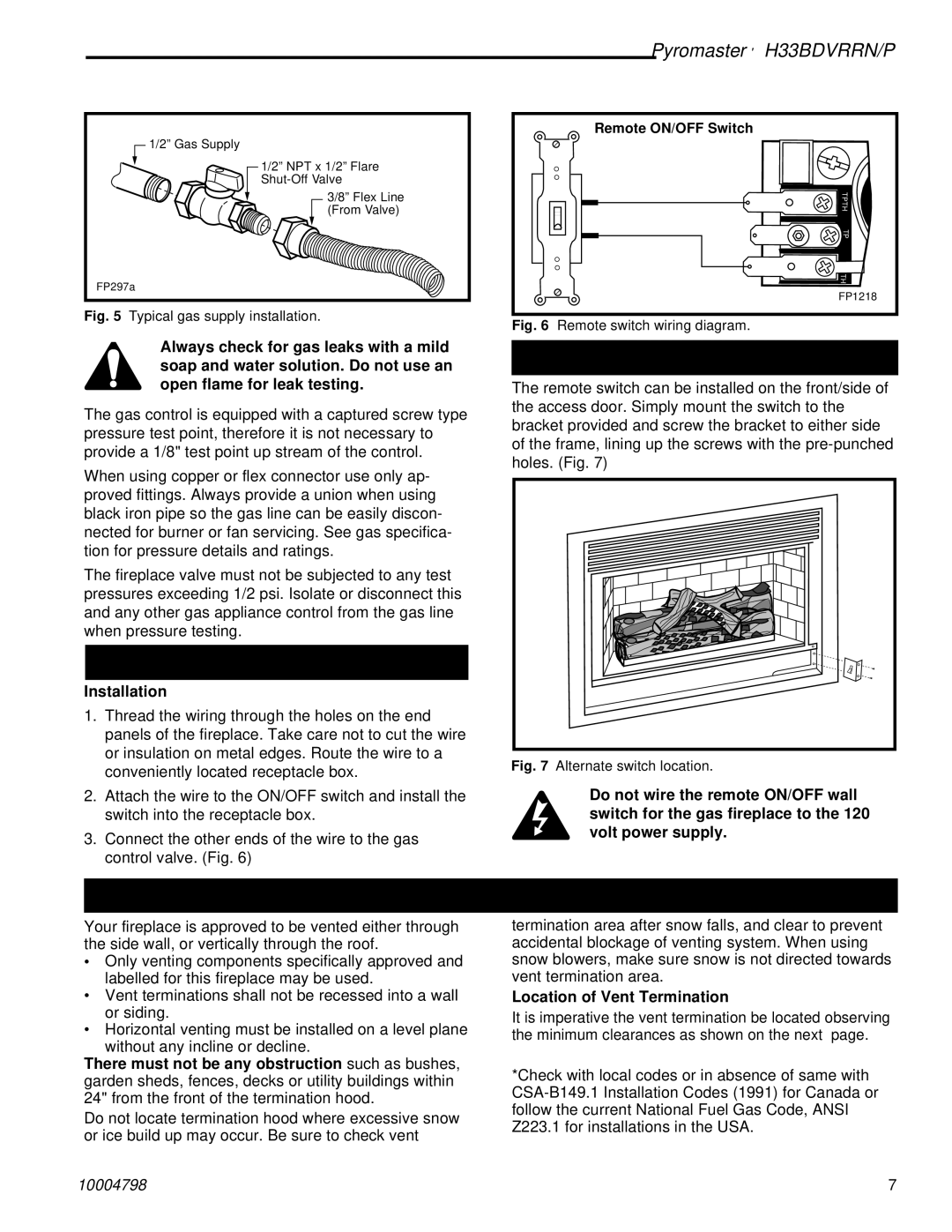H33BDVRRN, H33BDVRRNP specifications
The Vermont Casting H33BDVRRNP and H33BDVRRN are renowned for their sophisticated design and advanced features, making them excellent choices for those seeking high-quality wood-burning stoves. These stoves are a testament to the perfection of both form and function, showcasing Vermont Casting's commitment to craftsmanship and innovation.One of the standout features of the H33BDVRRNP and H33BDVRRN is their efficient heat output. With a robust firebox capacity, these stoves can accommodate larger logs, promoting longer burn times. This not only means less frequent tending to the fire but also enhanced heat retention in your home. They offer an impressive BTU range, ensuring that they can effectively warm a variety of spaces, from cozy cabins to expansive living rooms.
Equipped with the latest burn technology, the H33BDVRRNP and H33BDVRRN provide a cleaner, more efficient burn. The stoves utilize a secondary combustion system that significantly reduces emissions, making them an environmentally friendly option. This advanced technology optimizes fuel usage, resulting in less wood consumption and fewer pollutants released into the atmosphere. In addition, the integrated air wash system keeps the glass doors clean, allowing you to enjoy the mesmerizing view of the flames without the hassle of frequent maintenance.
The construction quality of the H33BDVRRNP and H33BDVRRN is evident throughout. Made from solid cast iron, these stoves are built to withstand the rigors of high-heat operations while providing excellent durability and longevity. The heavy-duty materials also contribute to excellent heat retention, ensuring that warmth radiates effectively throughout your home.
Aesthetically, both models boast a classic yet contemporary design, making them suitable for a wide range of interior styles. Available in various finishes, homeowners can easily find a version that complements their décor. The thoughtfully designed airflow control allows users to achieve their ideal burn rate with ease, enhancing both usability and comfort.
In conclusion, the Vermont Casting H33BDVRRNP and H33BDVRRN are exceptional wood-burning stoves that combine efficiency, beauty, and advanced technology. Their features make them a reliable heating source while maintaining a minimal environmental impact, ensuring that you can enjoy the warmth and ambiance of a wood fire without compromising on quality or sustainability.

